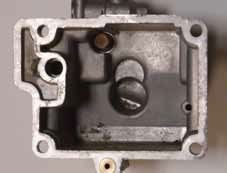
One of the first things we research when designing a new product test are industry standards already in place. Frequently, there are none, or those that exist have little to do with the real world.
Testing organizations such as Underwriters Laboratory, Society of Automotive Engineers, and the American Society for Testing and Materials certify a wide range of products that boaters use, but the test protocols often focus on the needs of the mainstream consumer market or for industry; many of the unique problems that small-boat sailors face arent taken into account. (This should be no surprise given the small market we represent.)
Standards offer a vital service to consumers and manufacturers. They help ensure that the products we buy live up to makers claims; they provide a benchmark for manufacturers; and they help level the playing field for competitors.
Standards also can be an obstacle to innovation. They define how quality is to be measured, as well as the instruments for measuring; this gives them tremendous inertia. At best, a new set of standards is its own little sandbox. Entrepreneurs must either play by the rules or take their pail and shovel someplace else. At worst, they are a Procrustean solution-an arbitrary set of rules designed to benefit the pioneer product, or to favor leading manufacturers.
Once bad standards are put in place, we are stuck with them, often for years to follow. That is why it is so critical that any new standards are not only good, but adaptable to todays rapidly changing world.
This months issue features articles on corrosion-fighting fuel additives (page 14) and the new Satellite Emergency Notification Devices (page 26). Both articles examine the way products are developed for a specific market. Both raise important questions about this process.
In our article on corrosion-fighting fuel additives, we ask: How useful are tests established primarily for automobiles, ships, and high-volume commercial purposes-pipelines, bulk carriers, and fuel storage facilities-to the day-to-day world that our small gasoline engines live in, with the constant exposure to salt water, contaminated fueling stations, and fuel systems comprising a mix of galvanically incompatible metals? After all the fumes settled in the wake of our non-standard test, I believe that even our critics now see the wisdom of our choice to develop our own test protocol.
In our article on the new Satellite Emergency Notification Devices, or SENDs, like the SPOT Connect, DeLorme inReach, and Cerberus, we look at the evolution of these devices and the still-pending standard that will guide them: SC-128. We also examine the tragic consequences of what can happen when a device is introduced without carefully considered standards for its performance or use.
For me, both stories point to the same conclusion: a standard should never be regarded as an end in itself, but as the means to an end-and neither of these is above scrutiny.
Whenever we ask ourselves, Is this good?, we need to also consider, By what measure? At Practical Sailor, these are the questions we ask every day.






































